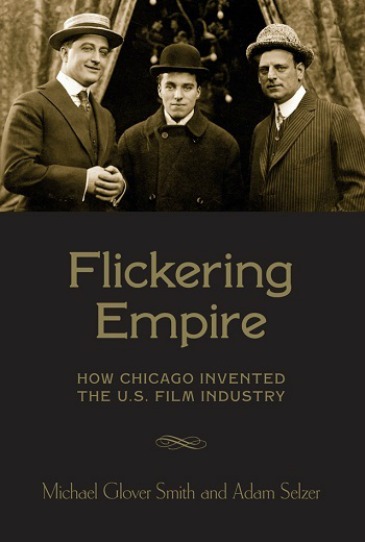'Flickering Empire' Gives Chicago Its Due In Movie History
By Joel Wicklund in Arts & Entertainment on Feb 19, 2015 3:45PM

Cover image: Wallflower Press
Hollywood may define film history for most, but at the dawn of the medium as a popular entertainment and art form, Chicago was top dog. It was a short reign for the Second City, but a vital, often overlooked period that is finally given its due in the exceptional new book, Flickering Empire: How Chicago Invented the U.S. Film Industry.
In this concise yet thorough history, authors Michael Glover Smith and Adam Selzer provide an entertaining and highly detailed account of Chicago's prominence as movies evolved from an exhibition novelty to the dominant mass entertainment of the 20th century. The Essanay and Selig Polyscope studios (anchored in what are now St. Augustine and North Center, respectively) and their colorful founders are at the center of this rich story, but dozens of other charismatic historical characters weave their way in and out of the account.
Flickering Empire shows how Thomas Edison's credit-hogging, patent-grabbing and lawsuit-slapping practices influenced the early industry far more than his technical innovations (largely the work of subordinates and competitors), while Chicago-based titans such as William Selig, George Spoor and Gilbert "Broncho Billy" Anderson (a major early film star as well as studio honcho) were central in moving the medium from simple filmed actions or stunts to true narrative filmmaking. The lightning-fast changes in production, exhibition and distribution techniques are also detailed.
Many Chicagoans (and certainly local film buffs) are familiar with Essanay as an historical entity, largely due to the studio's brief involvement in Charlie Chaplin's career. But while the significance of Chaplin to the rise and fall of the studio is detailed, this book will be a revelation for many in showing the immense reach and success of the company, which produced and/or distributed literally thousands of movies in just over a decade.
The similarly giant impact of Selig Polyscope and the major contributions of other local enterprises may be equally surprising. That Chicago is mainly cited as a footnote in most film histories certainly has something to do with the rarity of these very early movies, but also the lazy research and East Coast/West Coast biases of many writers. Smith and Selzer clearly did their homework and the result is a book that immediately joins the ranks of essential film references.
Don't be daunted by the heft of the subject, however. Flickering Empire is a brief and breezy read, and its meticulous historical documentation is accented with engaging portraits of eccentrics and massive egos, as well as a fair bit of juicy gossip.
By the time feature-length films were coming into vogue (1915 or so), the industry had largely moved west and Chicago's time at the top of the movie mountain would be mostly forgotten as California became synonymous with American film. Brevity, however, does not discount our city's primal role in movie history. Flickering Empire is a great reminder of that.
This Saturday, Feb. 21, Transistor (3441 N. Broadway) will host a book launch party for Flickering Empire. In addition to talking about the book, Smith and Selzer will show some rare, very early movies made in Chicago. The 8 p.m. event is free (BYOB).